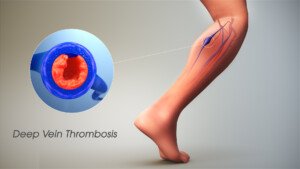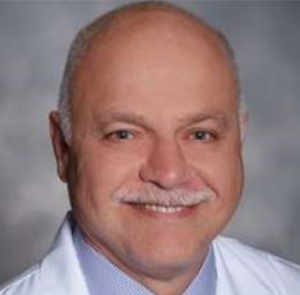
Ever wonder why, if the body has a natural clot-dissolving mechanism, DVT patients must continue with blood thinners for many months even after the blood clot is dissolved?
“There is a balance between thrombosis (clots forming) and thrombolysis (clot dissolving) in our bodies all the time,” explains Seyed-Mojtaba Gashti, MD, a board certified vascular surgeon with Broward Health Medical Center in Florida.
The body’s blood clot dissolving mechanism works just fine – as long as everything else is working fine.
Otherwise people would be developing deep vein thromboses left and right without any overt causes.
Dr. Gashti continues, “When that balance is disturbed, that is why you can become hypercoagulable (more prone to forming blood clots).
“There are many protein deficiencies that can lead to this. These blood clots are called unprovoked. But most DVTs are in the category of provoked (after trauma, surgery, immobility, malignancy, etc.).
“The body’s thrombolytic function may eventually dissolve these clots, but because of the clot burden (size), it may take weeks or months.
“And in the meantime if you are not placed on blood thinners, the DVT can propagate and eventually cause a pulmonary embolism, which kills about 200,000 people every year in this country.”
If you’ve been diagnosed with a DVT, stayed in the hospital for a few days for treatment and were then discharged, being told that the blood clot has cleared up – you will still need to be on a blood thinner such as coumadin for many months.
It doesn’t matter if you were physically fit at the time of the diagnosis.
A physically fit person can still get a deep vein thrombosis, such as tennis champion Serena Williams after she injured her foot stepping on glass.
Excessive inertia from an injured body part, especially when combined with a long airline flight, will put anyone at risk for a DVT.
Though blood thinner drugs come with the potential for internal bleeding, the risk is outweighed by the benefit in the cases of most people with a DVT.
An elderly person with a history of brain bleeds who is also prone to falling is not be the best candidate for blood thinner therapy.
Blood thinners or anticoagulants can increase the risk of bleeding, including in the brain.
For someone with a past history of brain bleeds, the use of these medications could heighten the risk of recurrent bleeding episodes, which can be dangerous and potentially life-threatening.
Pulmonary Embolism: an Underrated Killer
A pulmonary embolism can lead to cardiac arrest.
These deaths end up getting lumped into the “heart disease” category for top causes of death, which is why you don’t see “pulmonary embolism” in the lists.

Dr. Gashti specializes in the diagnosis and treatment of vascular disease including abdominal and aortic aneurysm.
 Lorra Garrick has been covering medical, fitness and cybersecurity topics for many years, having written thousands of articles for print magazines and websites, including as a ghostwriter. She is also a former ACE-certified personal trainer.
Lorra Garrick has been covering medical, fitness and cybersecurity topics for many years, having written thousands of articles for print magazines and websites, including as a ghostwriter. She is also a former ACE-certified personal trainer.
.


























